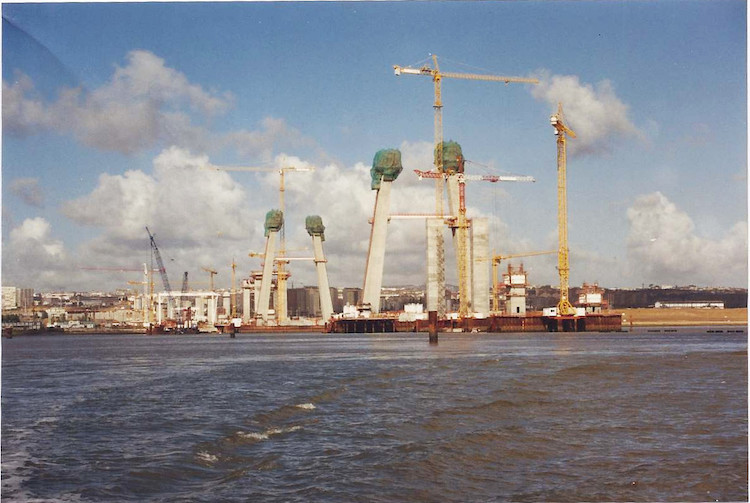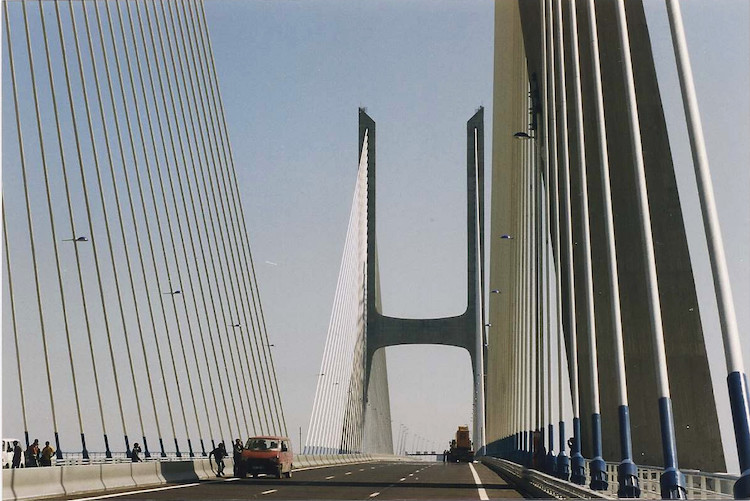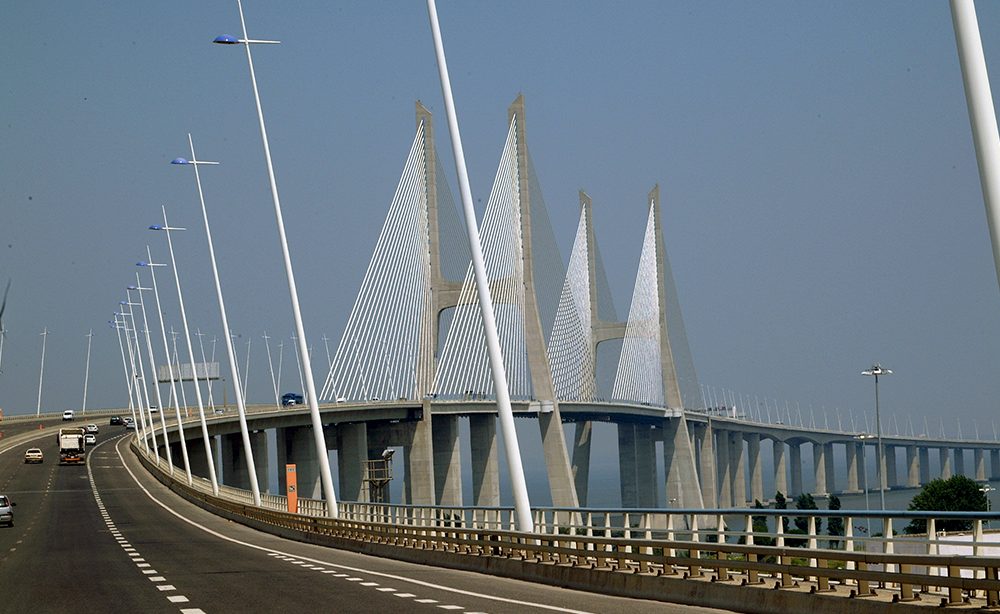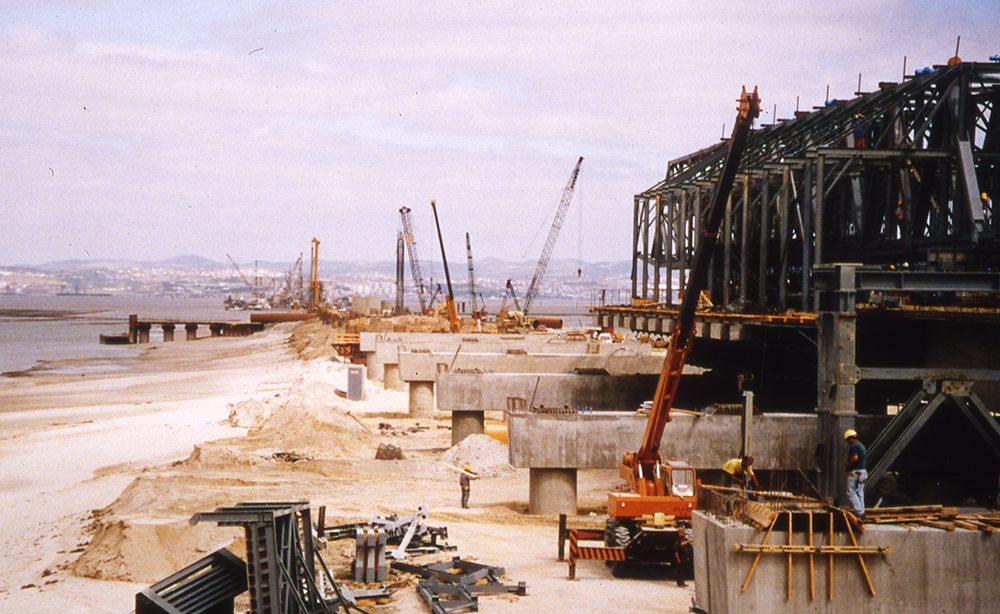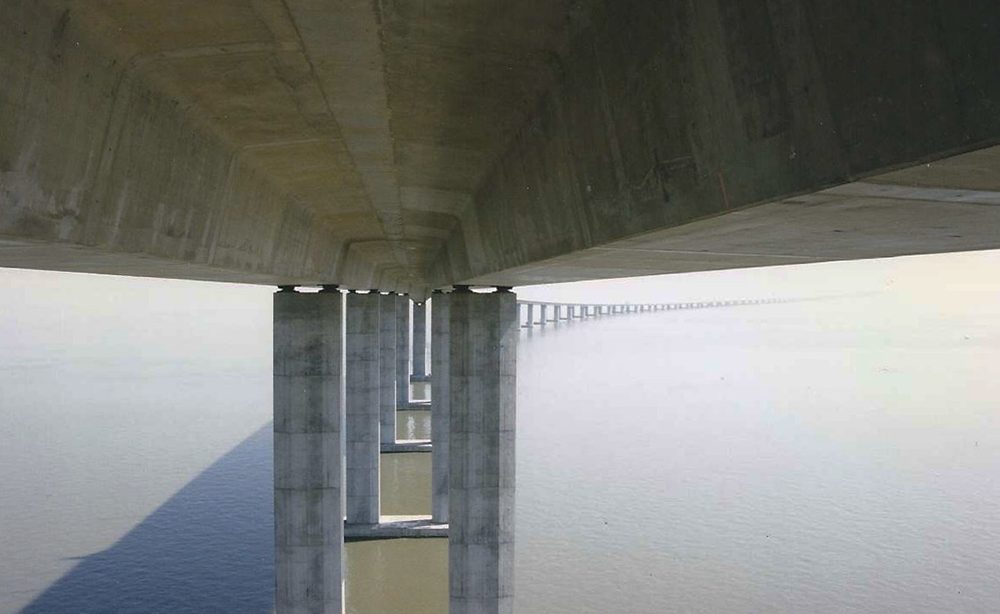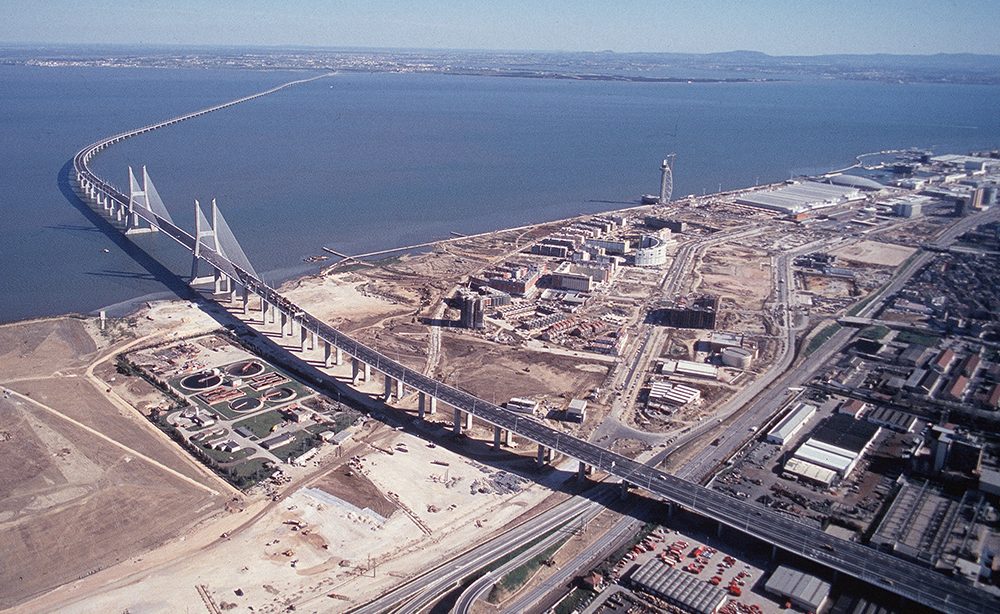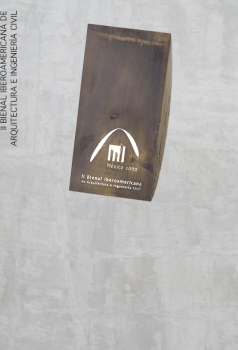The Vasco da Gama Bridge across the Tagus estuary connects Alcochete on the south bank to Lisbon and Sacavém, close to Parque das Nações, where the Expo 98 exhibition was held. It is the longest crossing in Portugal and the second longest in Europe, with a total length of almost 18km of which 10km are over the river, and it incorporates a cable-stayed bridge with a 420m-span between the 150m high pylons.
Armando Rito was involved in the conceptual design of the whole bridge, for which he was awarded the Engineering Prize at the “II Bienal Iberoamericana de Arquitectura e Ingeniería Civil”. Due to its great length and the need to meet the four-year deadline for its design and construction, the crossing was split up according to the technical constraints inherent in each unit, having Armando Rito’s team developed the detailed design of the north and south access viaducts.
The North Viaduct has an extension of 488m and consists of 11 spans with variable length. The deck, with a significantly variable width to accommodate acceleration and deceleration lanes and the adjustment to the access interchange’s geometry, is composed of four longitudinal T-girders, in prestressed reinforced concrete, interconnected by a reinforced concrete slab.
The South Viaduct consists of a prestressed reinforced concrete girder slab, identical to the one on the North Viaduct deck, and has nearly 4km with 85 spans of 45m each. As it crosses an environmentally sensitive area, the Samouco salt marshes, its pile foundations were built with the support of a temporary embankment, removed upon completion of the works and the decks were cast using four overhead form-carriers.
This bridge improved Lisbon’s accessibility, helping to divert the north-south traffic away from the city centre and providing an alternative crossing over the Tagus River, thus contributing to decongesting on the 25th of April Bridge. It opened to traffic two months before the inauguration of Expo 98 to which it provides direct access.

